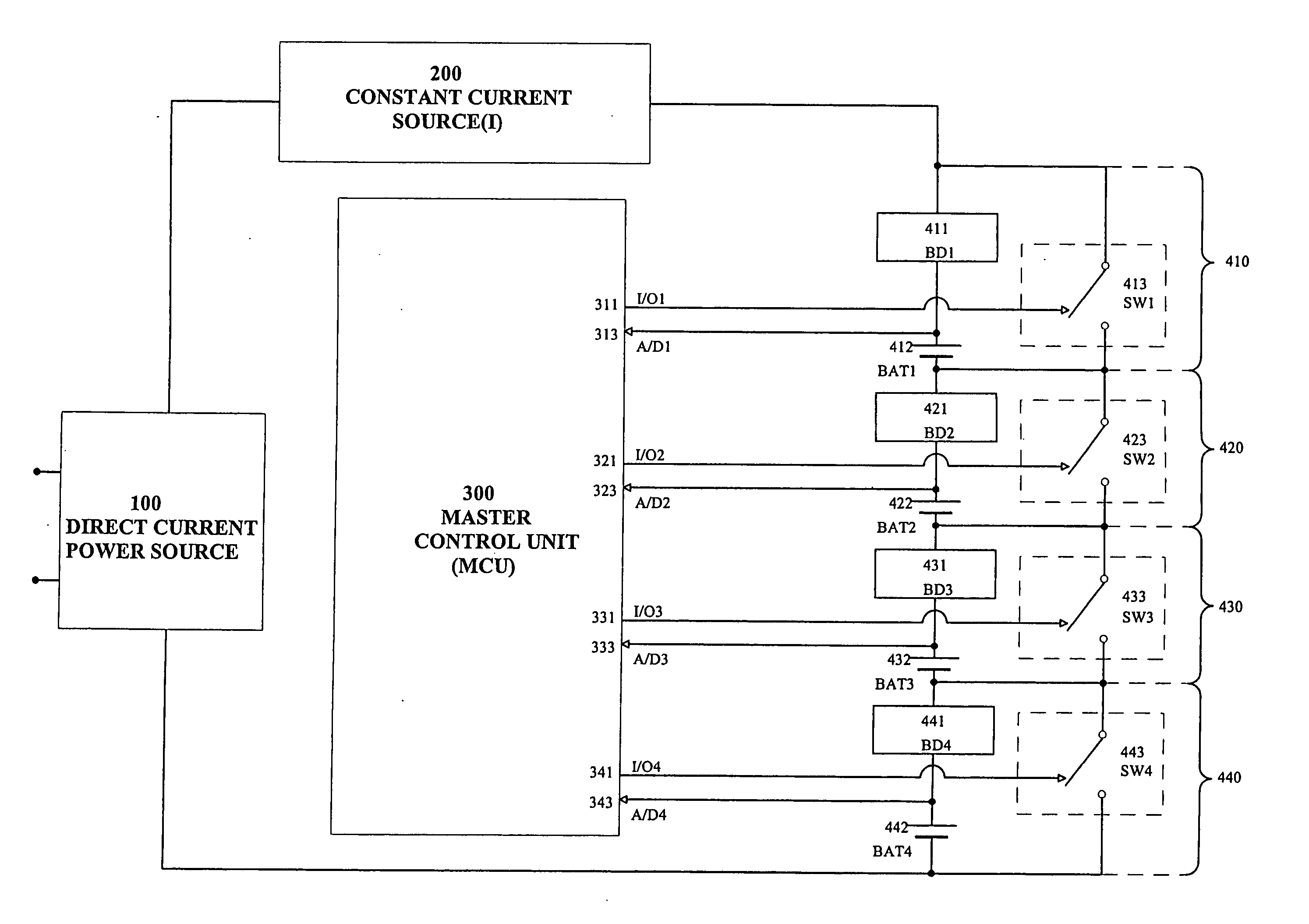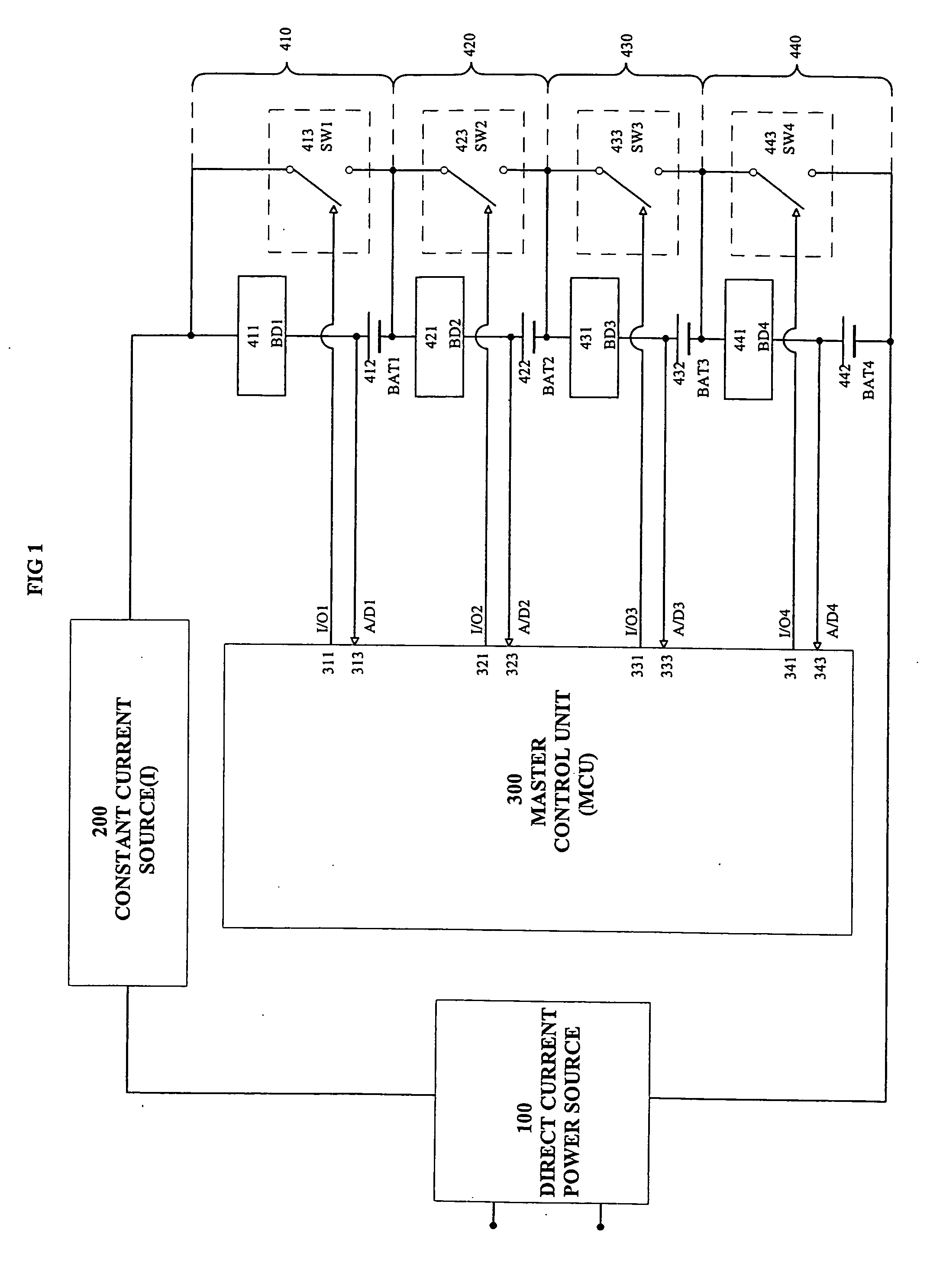Intelligent serial battery charger
a battery charger and intelligent technology, applied in the field of intelligent serial battery chargers and fast battery chargers, can solve the problems of large current supply rating, bulky and costly, and less attractive parallel charger topology for fast battery chargers, and achieve the effect of improving battery charging control and monitoring methods, minimal additional hardware overhead, and simple structur
- Summary
- Abstract
- Description
- Claims
- Application Information
AI Technical Summary
Benefits of technology
Problems solved by technology
Method used
Image
Examples
Embodiment Construction
[0039] Referring to FIG. 1, there is shown a block diagram of an intelligent serial battery charger as an example of the present invention. The battery charger comprises a direct current (DC) power source (100) as a main power supply, a constant current / voltage source (200), a micro-controller unit (300) as an example of control means or control device, and a plurality of battery charging sections (410, 420, 430 and 440) connected in series. The serially connected battery charging sections are connected to the positive and negative terminals of the direct current power source (100) in order to obtain DC power of the correct polarity.
[0040] The constant current source may comprise a switch-mode power supply (SMPS) with a chopping frequency of, for example, between 10-100 kHz, and preferably at 20-50 kHz. A high chopping frequency of above 20 kHz is preferred to mitigate possible audible noise while the upper frequency limit is to allow a sufficient time, for example, 2 ms, for stabl...
PUM
 Login to View More
Login to View More Abstract
Description
Claims
Application Information
 Login to View More
Login to View More - R&D
- Intellectual Property
- Life Sciences
- Materials
- Tech Scout
- Unparalleled Data Quality
- Higher Quality Content
- 60% Fewer Hallucinations
Browse by: Latest US Patents, China's latest patents, Technical Efficacy Thesaurus, Application Domain, Technology Topic, Popular Technical Reports.
© 2025 PatSnap. All rights reserved.Legal|Privacy policy|Modern Slavery Act Transparency Statement|Sitemap|About US| Contact US: help@patsnap.com



